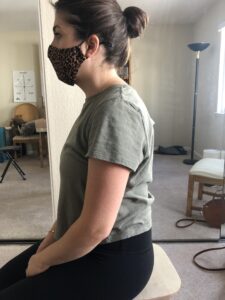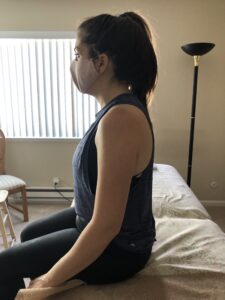Why Should Every Dancer Learn the Alexander Technique? A series of Alexander Technique lessons gives you skills for a lifetime in dance. It brings freedom to your body and control without tension. Dancing without tension gives beautiful, long, open...
Why Should Every Dancer Learn the Alexander Technique?
A series of Alexander Technique lessons gives you skills for a lifetime in dance. It brings freedom to your body and control without tension. Dancing without tension gives beautiful, long, open lines, and free movement that is easier to control.
As a dancer, you try to be the best you can be. Trying to achieve what may be difficult, trying to have larger movement, you may notice areas where your lines aren’t released, or it’s difficult and you’re a bit off, not quite on balance. Balance may be difficult, overall. You try to hold on but only stiffen up. Tension blocks your movement. Holding your core for good posture leads to holding the breath and that always interferes with good movement. Letting go of your breath, you may lose your posture. How can you organize your body to dance with less stress?
Many high-level coaches do adjunct therapies to free their bodies. One of the best kept secrets is the Alexander Technique. There is no other method of body awareness that deals in this way with the spine, the neck and the head, other than Alexander Technique. You learn to release tension and still maintain your posture. Your arms and legs are freed to release in movement. You learn to have upright alignment without tensing your neck and shoulders. You look better on the floor and move with ease. Any dancer serious about their craft should take a series of Alexander lessons.
As children we’re born with beautiful alignment of the back and neck, but through life, we pick up habits of posture and tension. We learn to focus on the parts – pushing a shoulder down if it’s hiked up or focusing on the core if we’re collapsed. We’re not taught how the parts work together as a whole.
One day, my first dance teacher spoke about moving my head through space. It reminded me of Alexander Technique study that I’d done years earlier. Alexander lessons show you how your head can be free on top of your neck, so it doesn’t disturb the balance of your body. I went back to Alexander lessons and it helped; I was able to balance, “nose over toes” as my teacher said. It’s a feeling of lightness and spaciousness in the body…an expansiveness and ease.
Alexander Technique is so simple, every dancer should learn it. To my knowledge it is the only movement technique that specifically addresses your head and spinal alignment and how that affects your coordination in movement.
Young children generally have beautiful open backs, they move well and have natural alignment. However, in our high-tech world of computers and cell phones, most people lose the natural alignment of the head and spine. People sit too long in their chairs. The natural poise of the body is lost.
Here’s a recent student at her lesson:
1st Alexander lesson. After 3rd Alexander lesson. Note her poise and improved head/spine alignment.


Some dancers who are innate good movers never lose this coordination. For the rest of us, Alexander Technique is the best method to regain the poise of your neck and head while also releasing tension. It restores beautiful alignment. Some people regain an inch in height. You gain freedom and clarity in movement.
The best way to learn this is to contact me! Hands-on, private lessons are the fastest way to help yourself.
Here are a few books on the Alexander Technique:
The Alexander Technique Manual, by Richard Brennan
“A favorite of dancers and performers, the Alexander Technique is a simple yet profound way to release muscular tension throughout the body. It teaches us new ways of sitting, standing, and moving that put less stress on the bones and joints and help us move more gracefully.” (Brennan)
I frequently recommend Richard Brennan’s book to my students. It has clear explanations and great illustrations of common ways we pick up poor habits that come with you into dance. It has easy-to-understand descriptions of how to move with a lengthened spine and beautiful poise of the head, but without tension. In fact, in doing Alexander Technique, you will release tension, therefore movement become fluid and light. Brennan’s book is organized in sections that can be read independently. The exercise in Chapter Five is a practice everyone should do to reduce stress and tension. In a few minutes you can refresh your mind and body, allow your spine to lengthen and your back to expand. It is restorative and easy.
The Use of the Self, by F.M. Alexander
If you have ever tightened up in response to stress, if you have ever struggled with habits that interfere with dancing and don’t go away, Alexander Technique has critical information to help you regain control of your entire system. I recommend that my students at least read Chapter One, as all the major principles in the work are outlined in this chapter.
Alexander was an Australian actor who continually lost his voice on stage. In trying to resolve this, he discovered that he was breathing incorrectly, tensing his muscles, contracting through the spine, even gripping the floor with his feet. He reasoned that these patterns were connected with his problem of losing his voice on stage. He figured out a way first to stop, then to allow a proper expansion out along the spine and out the arms and legs including the hands and feet. Indirectly, as a result of this, his problems cleared up. He found that the body works as a whole and that most people have developed these patterns of tension. Using Alexander’s method is applicable to improving all movement-related activities. It is transformative in dance.
The Alexander Technique, a Practical Program for Health, Poise and Fitness, Glynn MacDonald
This book is very useful for its many how-to procedures for a wide variety of activities and wonderful, clear photographs. You can use these exercises to help organize your body with less effort in dance. Here are some good ones to get started:
Page 72, how to raise your arms without affecting your back or poise on your feet, applicable to all dance.
Page 74, how to squat with a lengthened spine teaches you to free your legs to move while your spine stays long.
Page 82, Star exercise – how to expand both arms and legs outward without affecting your shoulders or back. Now take that expansion into a dance frame without tension.
The book includes sections that explain the Alexander principles in brief form for quick reference. These and more activities in the book are easier in a lesson with an Alexander teacher, however if you don’t have the opportunity to work with a teacher, you can try them on your own and benefit from them.
Dana Ben-Yehuda is an Alexander Technique teacher in private practice for 20 years, and a competitive ballroom dancer, winning 1st place U.S. Dance Championships (USDC) 2019 Pro-Am Ladies Silver C. Dana specializes in helping dancers move without tension, find inner and outer balance and dynamic poise. Dana was a working actress in Hollywood and Israel. Hear Dana in an interview about the Alexander Technique.
Her professional work includes SJSU Dept’s of Music and Dance, Stanford University Continuing Education, West Valley College (Theater), Music at Menlo, and Google. Dana is a referral source for UCSF Movement Disorders and Stanford Pain Management clinics. She is a Member of the American Society for the Alexander Technique (AmSAT). She is a graduate of: The Alexander Educational Center, Berkeley, and earned her BA in Theater/Acting, UCSC. A founding member of Academy of Stage and Cinema Arts (ASCA), and studied Music/Classical Guitar, San Francisco Conservatory of Music.











